
A veterinarian recently asked me, "What do we need to pay our veterinary technicians to keep them with us? And what do we need to offer to get more educated technicians in the field?"

A veterinarian recently asked me, "What do we need to pay our veterinary technicians to keep them with us? And what do we need to offer to get more educated technicians in the field?"
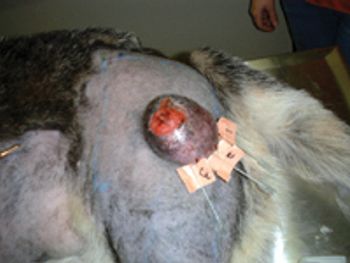
RALEIGH, N.C. - Hyperthermia combined with radiation treatment has received positive response in canines with macroscopic tumors in a clinical study at North Carolina State University (NCSU).

We struggle in training veterinarians to treat all species and all specialties. The general public of course recognizes that it is difficult to be a veterinarian because you have to be able to treat every species.

I read Brian Conrad's article, "Are You Chasing Off Clients?" (July/August 2006), and he makes some valid points. In the same breath though, you must set limits or clients will run over you as long as you let them.

College Station, Texas - Laurie Jaeger, associate professor in the College of Veterinary Medicine & Biomedical Sciences at Texas A&M University, was named a 2006 Piper Professor.

Portland, Ore.-Banfield, The Pet Hospital has teamed up with the Meals on Wheels Association of America (MOWAA) to launch a national pet food drive.

It is interesting that the very best thing that you can do to become better at recognizing and diagnosing lameness in horses may also be the best thing that you can do for your business. Dr. Colin Burrows, executive director of The North American Veterinary Conference, wrote a piece on marketing strategy in the July issue of the NAVC Clinician's Brief.
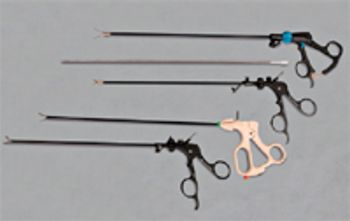
The laparoscope was developed as a diagnostic tool in the early 20th Century with the first experimental laparoscopy being performed in a dog in 1901. It wasn't until the 1930s that the laparoscope began being used as a diagnostic tool in human medicine. It took another 50 years before the laparoscope was used to perform surgeries such as appendectomies and cholecystectomies.
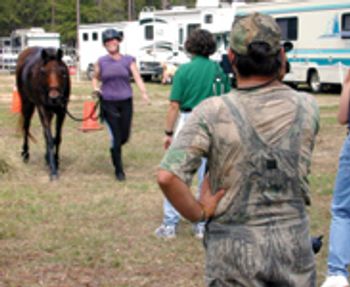
Analysis is important, but it's still critical to get out to watch horses move.

Davis, Calif. - Dr. Michael Kent, an investigator at the University of California-Davis, is exploring different drugs to help fight canine malignant melanoma.

Study data shows that for every 100 job openings, only 96 veterinarians will be ready to fill the spots.

In addition to evaluating our year-end fiscal balance, we should include the number of patients benefiting from our efforts.

Obesity is considered an epidemic in this country. And pets certainly aren't immune. An estimated 35 percent of adult cats are considered overweight. DVM Newsmagazine recently asked Dr. Tony Buffington, an animal nutritionist at The Ohio State University College of Veterinary Medicine, to offer some pet weight-loss advice.

Elimination of pain is an effective focus and client motivator.

Fort Collins, Colo. - Colorado State University (CSU) researchers have developed a way to deliver intravenous radiation drugs to bone cancer patients without causing damage to other healthy cells and vital organs, drastically reducing illness and other common side effects of toxic radiation treatments, the university reports.

In our practice we actually see more cases of Cheyletiella mites "walking dandruff" than fleas!

Atlanta - 7/31/06 - Georgia lawmakers revised the state veterinary practice act with active support of the Georgia Veterinary Medical Association and the state board of veterinary medicine.

Honolulu - 7/17/06- More than 9,500 attendees of the American Veterinary Medical Association's annual convention have convened on Honolulu, marking this year's show the group's largest in attendance.
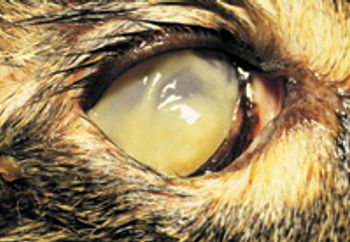
The cornea is a unique portion of the outer fibrous tunic of the eye. Being transparent, it is the main refractive structure of the eye due to the air tissue interface. Even though the cornea is constantly exposed to the environment, it is able to maintain its clarity by continually replacing the surface epithelium and by maintaining a preocular tear film with the aid of both the lacrimal system and the eyelids.

Considered a high-risk factor for compassion fatigue, euthanasia takes an emotional toll on the entire hospital staff, an expert says.

Knowledge of urolith composition is important because contemporary methods of detection, treatment and prevention of the underlying causes of urolithiasis are primarily related to knowledge of urolith composition. The following discussion is based on quantitative analysis of 275,000 canine uroliths submitted to the Minnesota Urolith Center from 1981 to the spring of 2006. (For additional details related to feline uroliths and feline urethral plugs, refer to the Diagnote entitled "Changing trends in composition of feline uroliths and feline urethral plugs," published in the April 2006 issue of DVM Newsmagazine (Vol. 37, No.4).

National Report - $1,451: It's the price most clients will stop treatment of a sick or injured animal, veterinarians report.

Practicing in the only health profession sanctioned to end life, Dr. Mary Welle vividly recalls the case.

Madison, Wis. - A study conducted by a University of Madison-Wisconsin veterinary ophthalmologist showed an increase in intra-ocular pressure (IOP) in dogs while pulling on a collar, confirming a correlation between glaucoma and collar stress.

Oral tumors are the fourth most common cancer in dogs and represent 6 percent of all canine cancers. The most common malignant tumors in dogs are melanoma, fibrosarcoma, SCC and osteosarcoma. Benign tumors include the epulides (ossifying, fibromatous and acanthomatous) and other odontogenic tumors. In cats, oral tumors make up 3 percent of all feline cancers. SCC is the most common malignant tumor followed by fibrosarcoma. Benign oral tumors are much less common in cats.
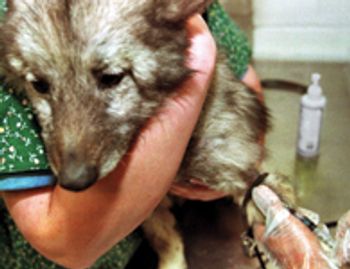
National Report - While many veterinarians shun convenience euthanasia, problems associated with pet relinquishment live on.

STARKVILLE, Miss. - 6/28/06 - Mississippi State University's (MSU)College of Veterinary Medicine received a $500,000 endowment to decrease the number of animals euthanized in the county.

Most commonly, tracheal collapse occurs in middle-aged to old dogs including Yorkshire terriers, Pugs, Chihuahuas, Pomeranians, Maltese, as well as Miniature and Toy Poodles.

Dr. Mark G. Papich at the 2005 American College of Veterinary Medical Internal Medicine Forum (ACVIM) in Baltimore gave a lecture on the safety and efficacy of compounded drugs.

The next time you feel low, consult this list to learn what others love about veterinary medicine-and let their joy inspire you.